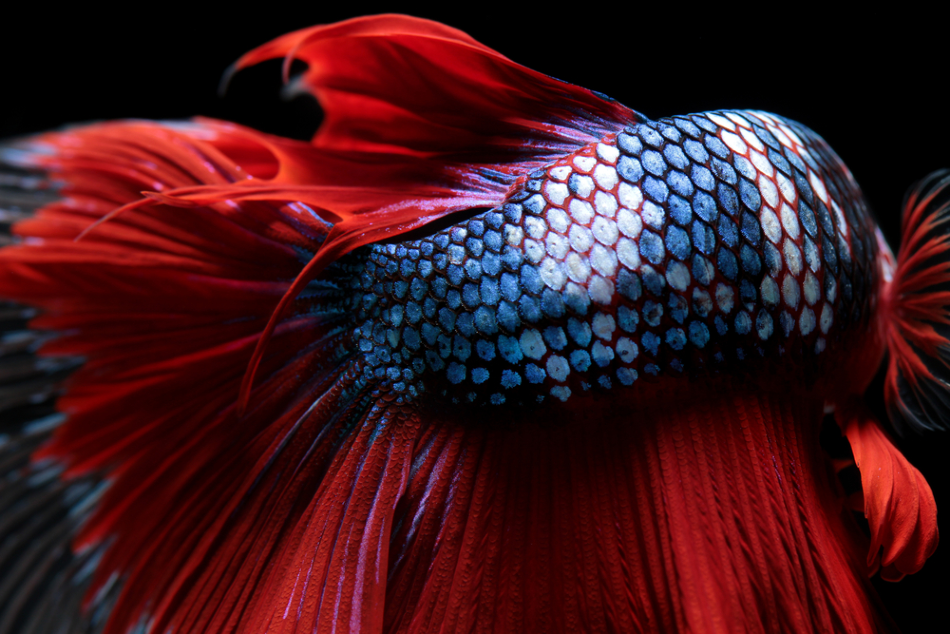
Image Credit: Napat/Shutterstock.com
Guanine crystals exist in nature and are the substance that gives fish scales their mirror-like sheen. They produce vivid colors in animals and also act as vital components in the visual systems of many species.
Guanine crystals have many properties that allow them to be used in nature to manipulate light, giving rise to the construction of a vast assortment of optical systems, including camouflage, vision, display, and more. This use of guanine crystals in nature has inspired scientists to exploit the features of these crystals. This has led to the creation of synthetic guanine crystals that have been used in the advancement of optical materials, including the development of organic micro reflectors.
In 2016, researchers at the Weizmann Institute of Science, Israel, published their paper in the journal, Advanced Functional Materials, outlining how organisms use guanine crystals in a range of optical systems. Examples of this are broadband and narrowband reflectors, diffuse scatterers, tunable photonic crystals, and image-forming mirrors. They also describe how the special properties of crystalline guanine can be exploited to create man-made optical systems, such as organic micro reflectors.
The special features of crystalline guanine that make it suitable for artificial optical applications are that it has an incredibly high reflective index. This is due to it being constructed from densely stacked H-bonded layers, creating an anisotropic crystal structure.
Crystalline guanine is also one of the only functional organic crystals to have been found in nature. It is also one of the most abundant, making its functions easier to study, allowing scientists to engineer artificial systems that mimic the natural work of natural crystalline guanine.
How can the Natural High Reflectivity of Crystalline Guanine be Enhanced?
Research has demonstrated that the natural high reflectivity of crystalline guanine can be enhanced by amending the morphology of the crystal. In nature, animals have been observed to mold the shape of the crystals into plate-like single crystals, increasing their refractive index. Scientists have used this information to understand how to use guanine to manipulate light.
Research is currently looking to create synthetic micro reflectors from guanine. Natural magnetic switchable reflectors made from guanine, such as those that exist in fish, are presently much more effective than synthetic ones created in the lab. While it is theoretically possible to create micro reflectors from synthetic guanine crystals, much more research and development are required before the functionality of the synthetic crystals matches those found in nature.
Before succeeding at creating synthetic guanine crystals that can match the functionality of those found in nature, one major limitation for preparing the synthetic crystals must be overcome. This is that the artificial preparation of synthetic guanine crystals is limited by the water-solubility of the crystals.
Numerous studies have succeeded in achieving the recrystallization of synthetic guanine within aqueous solution by enhancing the solubility by using the guanine molecule’s acid-dissociation equilibrium. However, the resultant crystals are inferior to those found in nature.
While the synthetic crystals are the same in terms of crystal structure, their external shapes mean they are unsuitable to craft artificial versions of the optical systems guanine crystals are used for in nature. In particular, it has been shown that they are insufficient for being used in magnetic switching optical devices, such as those that form the basis of micro reflectors.
The next step towards creating synthetic guanine crystals that are suitable for these applications will be in developing crystals with the correct external shape. They may not have to be identical to the shape found in nature, but it needs to facilitate reflection and perpendicular magnetic rotation.
References and Further Reading
Disclaimer: The views expressed here are those of the author expressed in their private capacity and do not necessarily represent the views of AZoM.com Limited T/A AZoNetwork the owner and operator of this website. This disclaimer forms part of the Terms and conditions of use of this website.